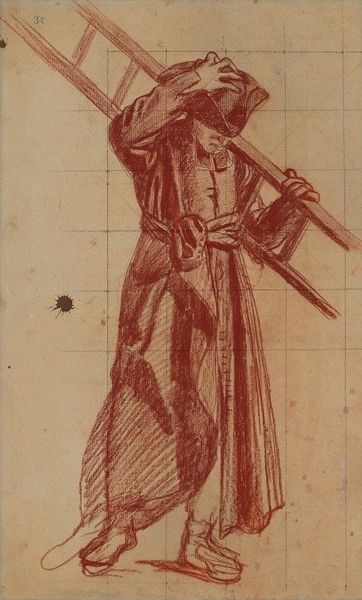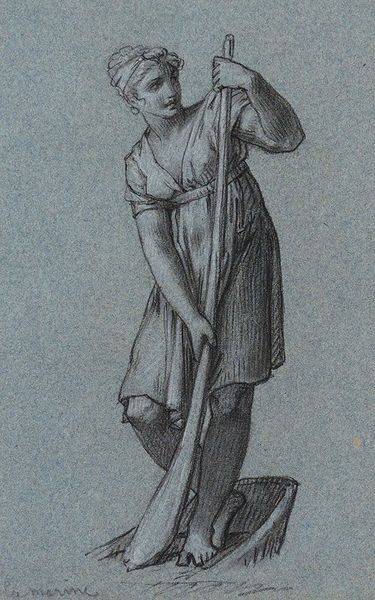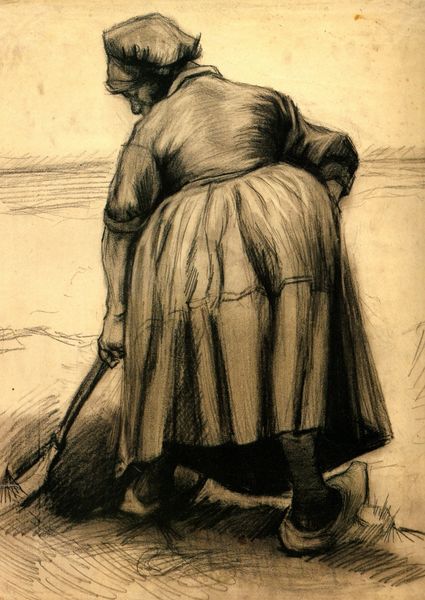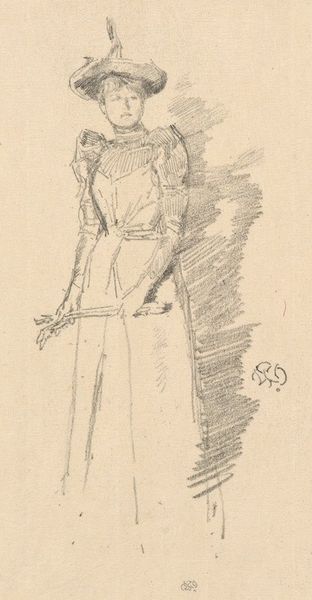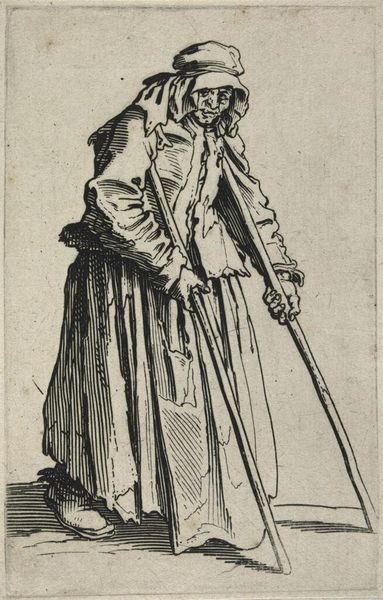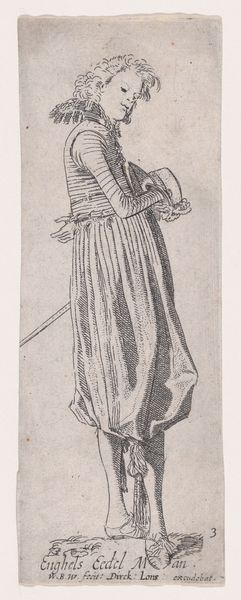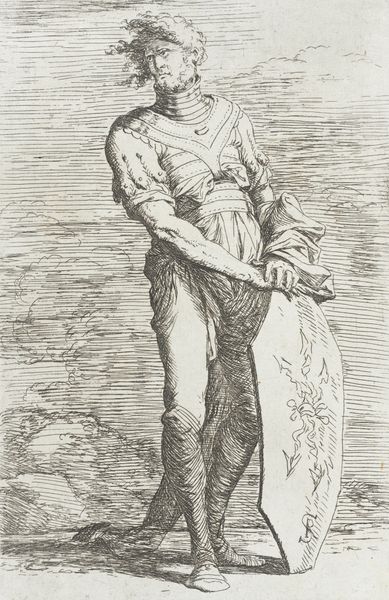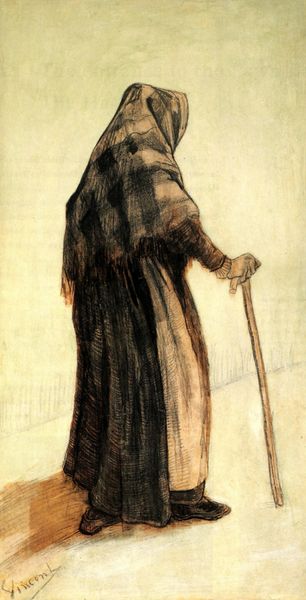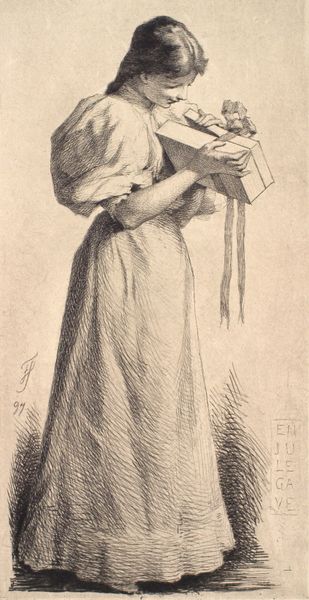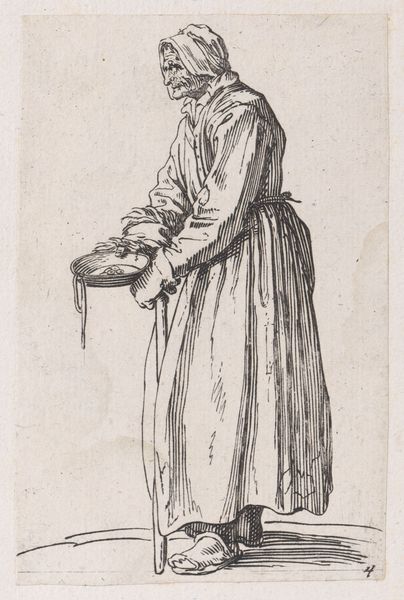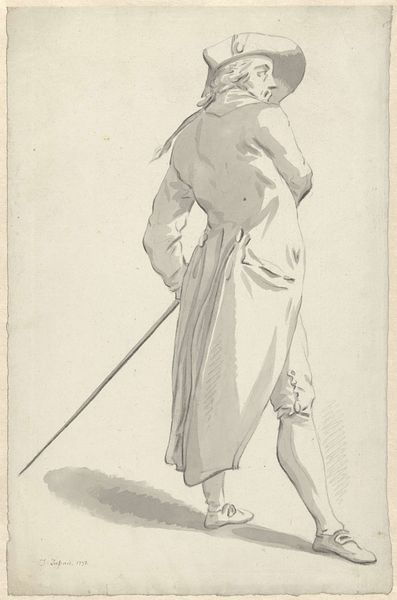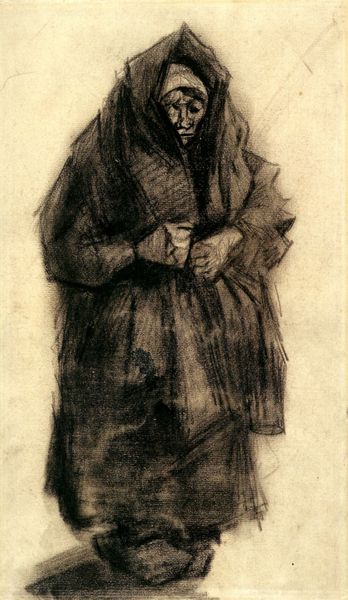
drawing, charcoal
#
portrait
#
drawing
#
charcoal drawing
#
pencil drawing
#
genre-painting
#
charcoal
#
post-impressionism
#
realism
Copyright: Public domain
Editor: This is "Woman with a Broom," a charcoal drawing by Vincent van Gogh from 1882. It's somber. The figure seems burdened, her face downcast as she sweeps. How do you interpret this work? Curator: This drawing reveals much about Van Gogh's engagement with social realism and the politics of representation in the late 19th century. He was deeply invested in depicting the lives of working-class people, particularly peasants and laborers. Editor: So it's not *just* a woman sweeping? Curator: Not at all. Think about the broader context. Industrialization was transforming European society. Artists like Van Gogh were reacting against the idealized portrayals of academic art, choosing instead to show the realities of poverty and toil. How might the art market have received such depictions? Editor: Maybe initially not very well if it challenged the status quo. Did he struggle to get recognition for work like this? Curator: Exactly. The art world often favors certain narratives. Van Gogh's unflinching portrayal of working-class life challenged conventional tastes and the values of the dominant social classes. And remember, museums and galleries play a role in validating art and shaping public perception. Editor: So the selection of works is also political? That's wild. Curator: Absolutely. Whose stories are told, whose images are displayed – these are always questions of power. Van Gogh, through his art, sought to give dignity and visibility to those often overlooked. Editor: I didn’t realize art could be such a commentary on power dynamics. I’ll never see these charcoal drawings the same way!
Comments
No comments
Be the first to comment and join the conversation on the ultimate creative platform.


